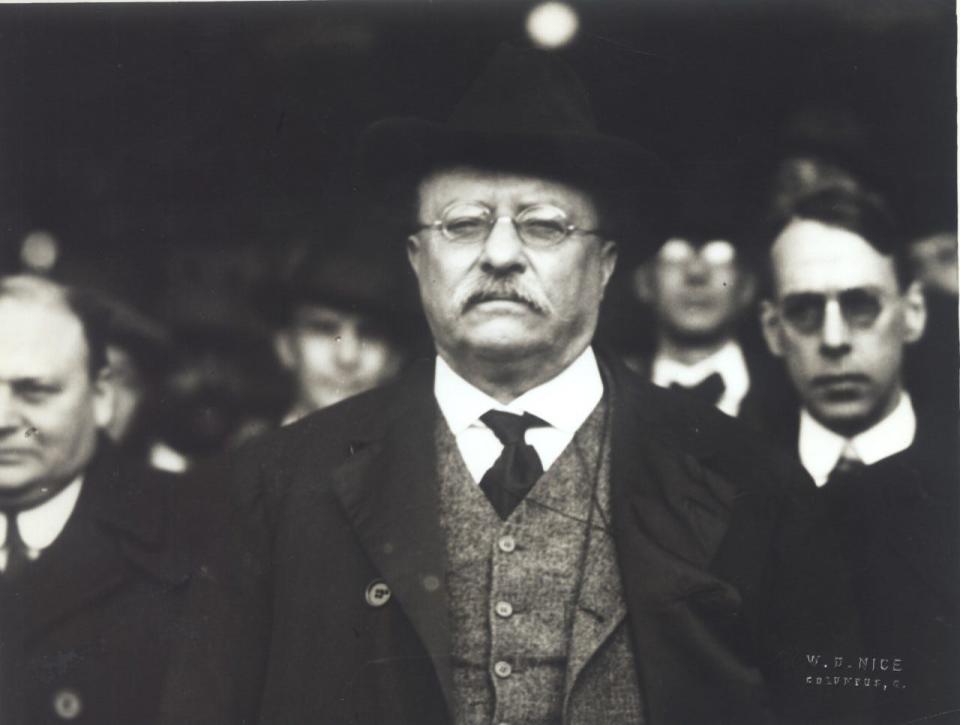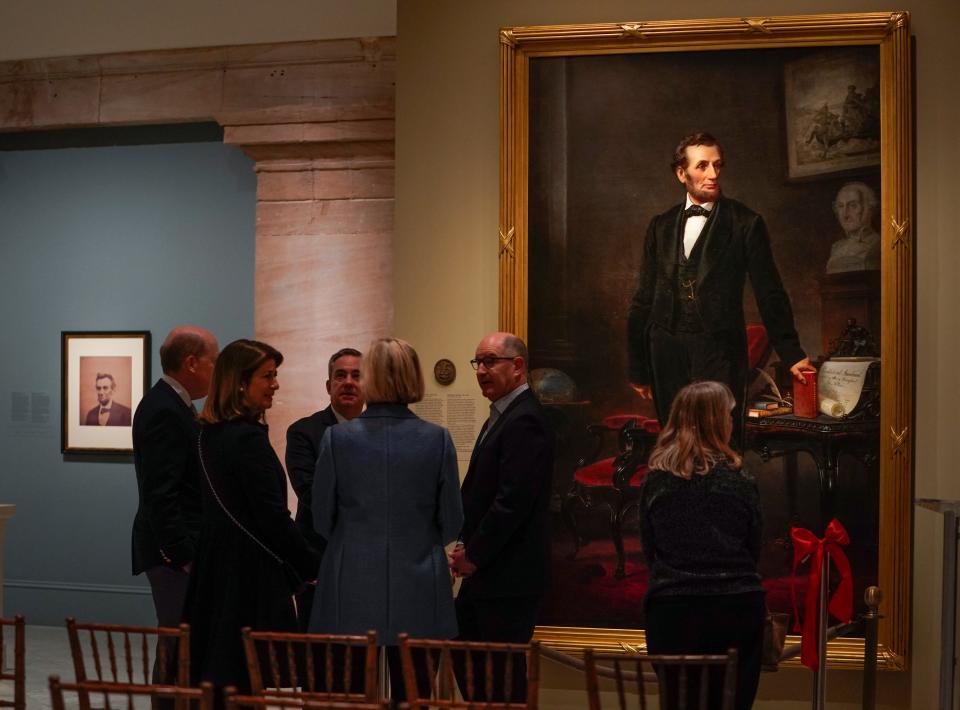Mike Curtin: 'Brazen crookedness' that lead to constitutional right LaRose wants to seize
- Oops!Something went wrong.Please try again later.
- Oops!Something went wrong.Please try again later.
Mike Curtin is a former editor and associate publisher of the Columbus Dispatch, and a former two-term state lawmaker who served on the Ohio Constitutional Modernization Commission.
The initiative power of Ohio citizens is on trial at the Statehouse.
Secretary of State Frank LaRose and 36 Republican members of the Ohio House want to weaken a 111-year-old constitutional right. They want future proposed amendments to achieve 60 percent of the vote to win passage.
Sponsors appear intent on doing it as fast as possible. They aim to put the proposal on the Nov. 7 ballot, to sabotage an expected reproductive rights amendment.

Today is ideal for reviewing Ohioans’ long and hard-won fight to win the initiative power. This is the 111th anniversary of Theodore Roosevelt’s address to Ohio’s 1912 state constitutional convention.
More:Tax cuts, school choice and transgender sports: Ohio House unveils legislative agenda
Roosevelt, the nation’s 26th president (1901-09), was a vigorous champion of the initiative and referendum. He considered them essential to enable ordinary citizens to fight the control monied interest had on elected officials.
Brazen crookedness spawned reform
In the 1880s and 1890s, Ohio was transformed into an industrial powerhouse. Industrialization, immigration, and urbanization fueled the rise of big-city political machines. Business tycoons bought political bosses and their hand-picked candidates.
By 1900, about 1 percent of the population controlled half the nation’s wealth. Ohio’s Statehouse and some city halls ranked among the most corrupt in the nation.

The brazen crookedness spawned reform in both Democratic and Republican parties. In 1897, Samuel M. “Golden Rule” Jones, an independent Republican, won election as Toledo mayor. In 1901, Democrat Tom L. Johnson won election as Cleveland mayor.
Jones and Johnson won national acclaim for bipartisan leadership on behalf of municipal home rule, the initiative and referendum, civil service, and other good-government reforms.
Our view: Deceitful bill proof some GOP lawmakers willing to steal rights from all Ohioans
In 1905, the state Democratic platform endorsed the initiative and referendum and direct election of U.S. senators. In 1908, the General Assembly outlawed use of corporate money to finance candidates and political parties.
On Nov. 3, 1911, about 300 reform-minded Republicans met in Cleveland to create the Ohio Republican Progressive League. The next year, Democrats founded the Ohio Democratic Progressive League.
Roosevelt channeled Lincoln.

After a decade-long push for the initiative, Ohio’s 1912 convention provided a perfect stage for Roosevelt, the great trust buster, to preach the gospel of citizen control of their government.
Roosevelt began by channeling Abraham Lincoln, who 53 years earlier made his first visit to the Ohio Statehouse (Sept. 16, 1859), where he reprised his “house divided cannot stand” remarks against slavery.
“With Lincoln, I hold that this country, with its institutions, belongs to the people who inhabit it. Whenever they shall grow weary of the existing government, they can exercise their constitutional right of amending it,” Roosevelt said.
“You are engaged in the fundamental work of self-government . . . framing a constitution (to allow) the people . . . to do justice and absolutely to rule themselves.”
Roosevelt warned of the “false constitutionalism” of conservatives beholden to monied interests. “The true Progressive, the Progressive of the Lincoln stamp, is the only true constitutionalist, the only real conservative.
“We are engaged in one of the great battles of the age-long contest waged against privilege on behalf of the common welfare,” Roosevelt said.
Thomas Suddes: Frank LaRose wants to rewrite history to hijack your century-old right
Frank LaRose: There's no 'knife to the neck' of voters on constitutional changes
“This country, as Lincoln said, belongs to the people.”
Lincoln, a keen student of history, knew of Alexander Hamilton’s warning, in Federalist 22, of requiring supermajority votes. “What at first sight may seem a remedy is, in reality, a poison,” Hamilton wrote. Empowering minority rule increases the likelihood of bribery and corruption, he warned.
Today, the largest Statehouse bribery scandal in Ohio history is being prosecuted in a federal courthouse in Cincinnati. In many states that provide citizens with the initiative, monied interests are bankrolling issues to dilute that fundamental, grass-roots power.
More:What is being said about Ohio's top politicians in the Householder-Borges trial
On Sept. 3, 1912, following the urgings of Roosevelt and their own state’s like-minded reformers, Ohioans embraced the initiative and referendum, adopting these powers for themselves with a solid 57.5 percent of the vote.
For 111 years, Ohioans have used these rights judiciously. They are as vital today as in Roosevelt’s day.
Mike Curtin is a former editor and associate publisher of the Columbus Dispatch, and a former two-term state lawmaker who served on the Ohio Constitutional Modernization Commission.
This article originally appeared on The Columbus Dispatch: Opinion: What is the danger of House Joint Resolution 1 to remove right

